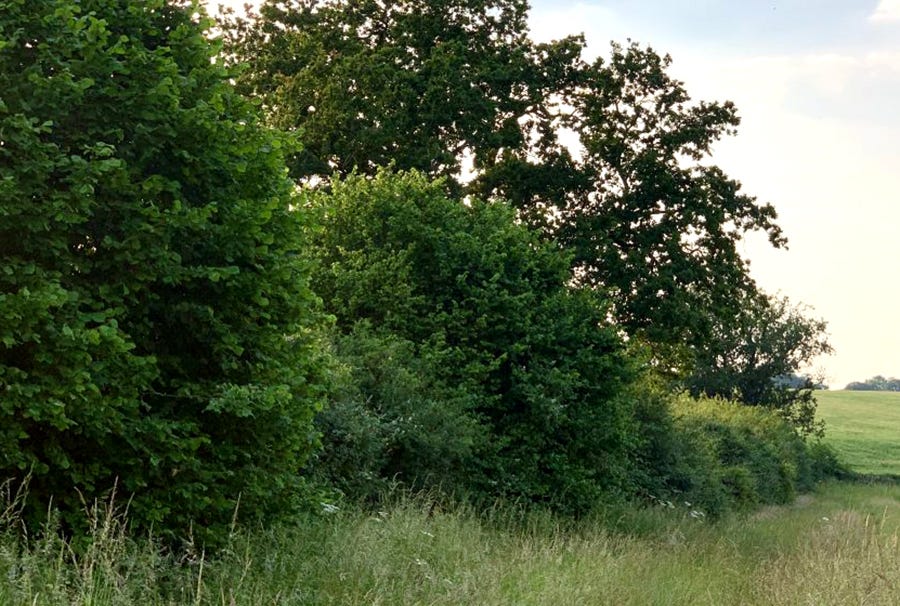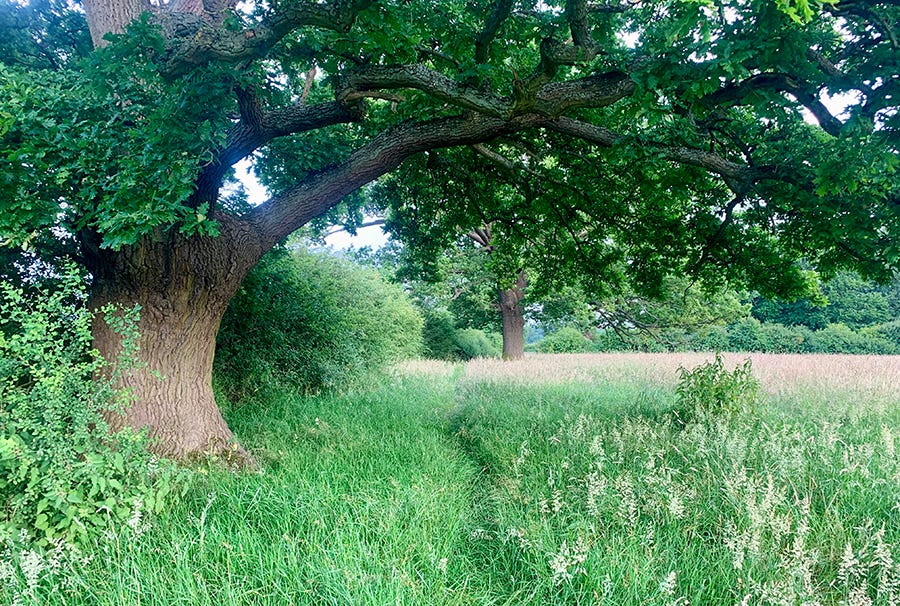In May, the government introduced new Hedgerow Management Regulations (England) 2024 which plugged the legal gap around the management of agricultural hedgerows created by the expiration of cross-compliance measures.
Although for many landowners this may not have changed anything (as cross-compliance meant seasonal cutting rules already), it does mean now that most of our agricultural field hedges are covered by these regulations. What this means for hedgerow cutting is, no cutting between 1st March and 31st August.
For those looking after hedgerows alongside roads or paths, it is essential they are managed to ensure the safety of all of us walking, cycling, driving, scooting, riding, or however you may travel. For this reason there are some exemptions, for example: hedges along roads or paths.
So far, in 2024, we’ve had lots of rain (maybe too much!) and this combined with summer’s sun, means that at this time of year our hedgerows are looking full, billowy and a bit wild.
For some, this may look unkempt, and the temptation to cut hedges may be great, especially as we get on into the latter stages of summer. For those who are eagerly awaiting 1st September it is worthwhile thinking about the benefits of holding off on getting the flail out and letting hedges grow a bit more, or even giving them another year off being cut.
Why would we do that?
A lot of our hedgerow tree and shrub species flower on second-year growth. This means that annually cutting drastically reduces the amount of flowers, and therefore berries, produced – not ideal for pollinators or overwintering birds.
At this time of year, our hedgerows are growing well after flowering in the spring and early summer. Berries, nuts and fruit will be setting, ready to be the much-needed resource of over-wintering birds, mammals, insects and human hedgerow foragers.
Cutting hedgerows in early autumn can remove a lot of this essential food-resource, before wildlife needs it later in the season. We know that uncut hedgerows, hedgerows that have had at least 2 years respite from being cut, hedgerows that have been incrementally trimmed, and hedgerows that are cut later in the winter have far more food provision for over-wintering wildlife. By holding off on cutting, we can really help out. Skipping a year can also save a bit of cash too!
Cutting in autumn is essential for some landowners as ground conditions in late winter can make getting a tractor into some fields more difficult and actually destructive in itself to field margins.
For those who can hold back, this is one of the few times that a bit of hedge cutting procrastination can really pay off.
Will Fitzpatrick is the Community Engagement Officer in The Tree Council’s hedgerows team. For all the latest hedgerow news, research and insight, visit www.hedgelink.org.uk








